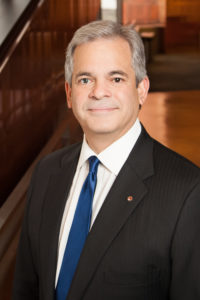 By Mayor Adler and Mike Bloomberg
By Mayor Adler and Mike Bloomberg
Three years ago, Austin City Council made an ambitious pledge to have over 50 percent of its power come from renewable energy by 2025 — and to achieve net-zero greenhouse gas emissions by 2050. And last year, Austin Energy’s rate case settlement began to finance the shuttering of the coal-fired Fayette power plant. All the while, Austin has become one of the fastest-growing economies in the U.S.
Switching to clean energy has been an important part of this success, and many other cities and towns are following the same strategy. Of course, as with any major innovation, the proliferation of clean energy has led to job shifts. The coal industry, in particular, has faced growing challenges in the face of this progress.
Coal pollution still results in about 7,500 U.S. deaths per year — down from 13,000 in 2010 — and coal is still the single-largest driver of climate change. Since burning coal leads to asthma, lung disease, cancer, heart disease, birth defects and countless other illnesses, consumers increasingly favor clean energy. And with clean energy sources at their cheapest prices in history, there’s a strong economic incentive to invest in renewables too.
As a result, coal production has become socially and economically impractical — with businesses, municipalities and individuals choosing clean energy instead.
Since 2010, nearly half of all U.S. coal plants have closed. Austin is in the fortunate and enviable position of owning its own electric utility — Austin Energy — which is one of the most progressive utilities in the nation when it comes to the use of clean power. As a city, Austin has taken positive steps to phase out our use of coal and instead use cleaner and greener sources.
Even before the rise of clean energy, coal-mining jobs had been decimated by technology that allows companies to mine coal with very few miners.
In the 1920s, there were more than 800,000 miners in the U.S. By the time coal production peaked in 2008, the number was down to 82,000. As cleaner energy replaces coal, that number has fallen even further.
Today, just 65,000 people work in coal mines, while nearly half a million work in the solar and wind industries. Think about that for a minute. In the years ahead, as the price of clean energy continues to fall, clean energy jobs will continue to grow — and cities will be responsible for powering this new industry.
Seventy percent of greenhouse gas emissions come from urban areas, which means that if places such as Austin continue to transition to renewable power sources, we will continue to lead the way on environmental progress. Just as important, by consuming renewable energy, cities like Austin will spur economic growth in towns producing clean energy across the United States.
The impact of coal on our economy and our planet is the subject of a new film, “From the Ashes,” which will premier in June on the National Geographic Channel. We are happy to have hosted a screening here in Austin. The film features several organizations in the Western and Appalachian regions that are providing economic development assistance and job training for out-of-work miners.
To support this work, Bloomberg Philanthropies has created a $3 million grant to support these organizations and match donations from the public.
Citizens, cities and businesses are leading the way to a clean energy future. Austin has accomplished a great deal in paving the way forward toward a clean energy future and we know that by working together with other cities, we can build a coal-free future that benefits all Americans, in all regions of the country.
